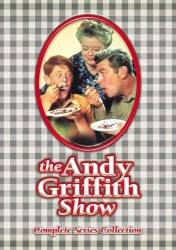Visible crew/equipment: When Floyd and the other men are with John Canfield joking about Floyd's barber skills, a chalk T-mark is visible on the ground by the man with his foot on the bench. Then when Canfield walks away we can see more chalk marks on the ground.
Other mistake: When John Canfield's talking to Floyd, Andy, and the other men they're in front of the display window, which doesn't have any panes of glass.






Answer: As noted in the previous answers, in real life, things like this provided wind and/or rain deflection, and also maintained a bit of privacy when blinds were raised somewhat. The interior courthouse set was located in the studio, so the "outside" Main Street didn't exist. I believe these things were added to the courthouse windows for practicality, to avoid some crew movement being visible on the opposite side of those windows. These are not "window boxes" to hold anything, as they're actually bottomless; we can see the Venetian blind's long pull cords under them. They're made of plywood and simple to build, so the "material and labor" was inexpensive. Similar variations made of different materials are in other movies/shows. In 1957's "12 Angry Men," textured chicken wire glass panels are in the jury room windows, and in "Jesse Stone: Night Passage" another type is in Jesse's office windows.
Super Grover ★